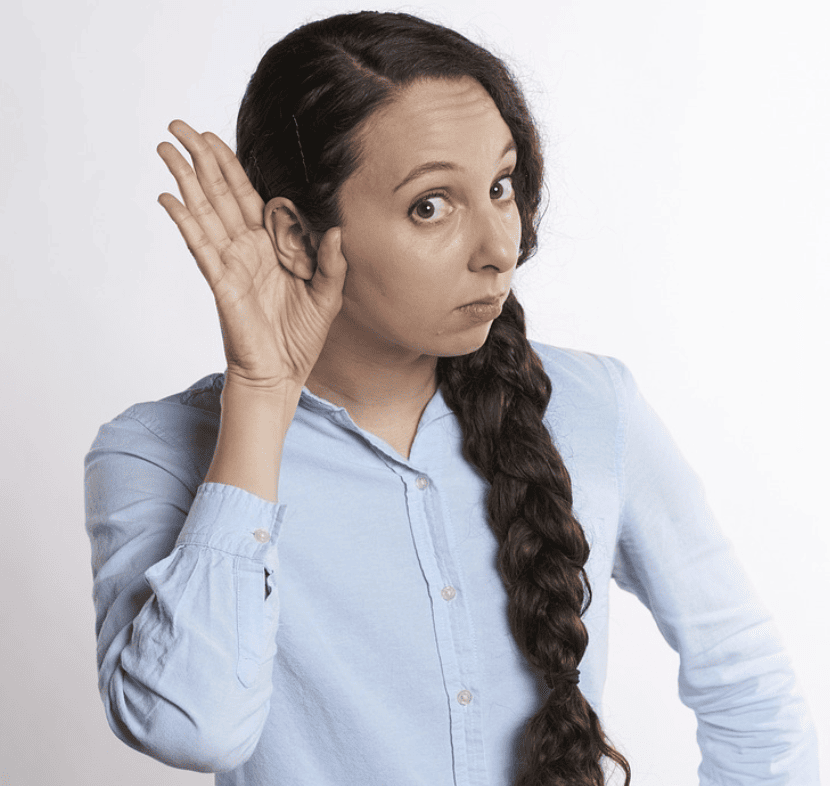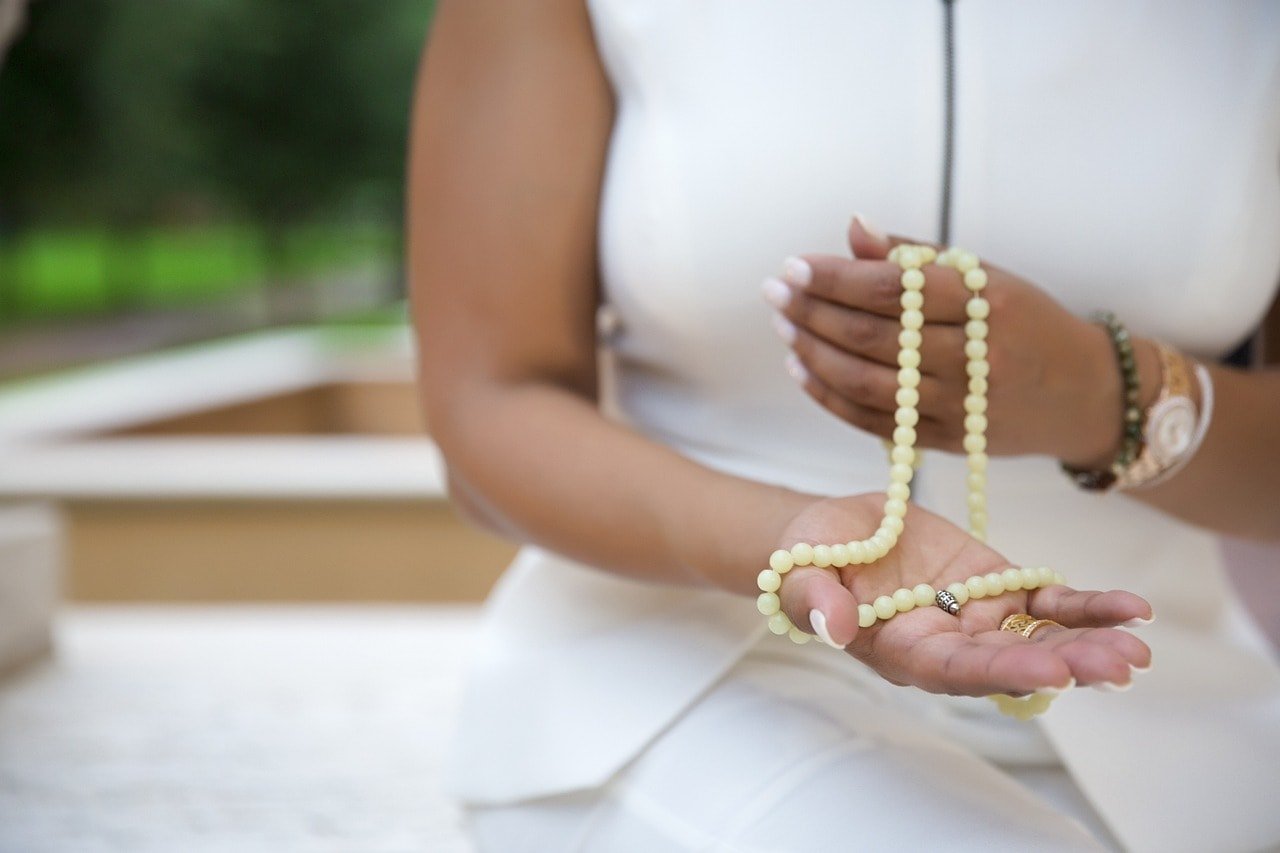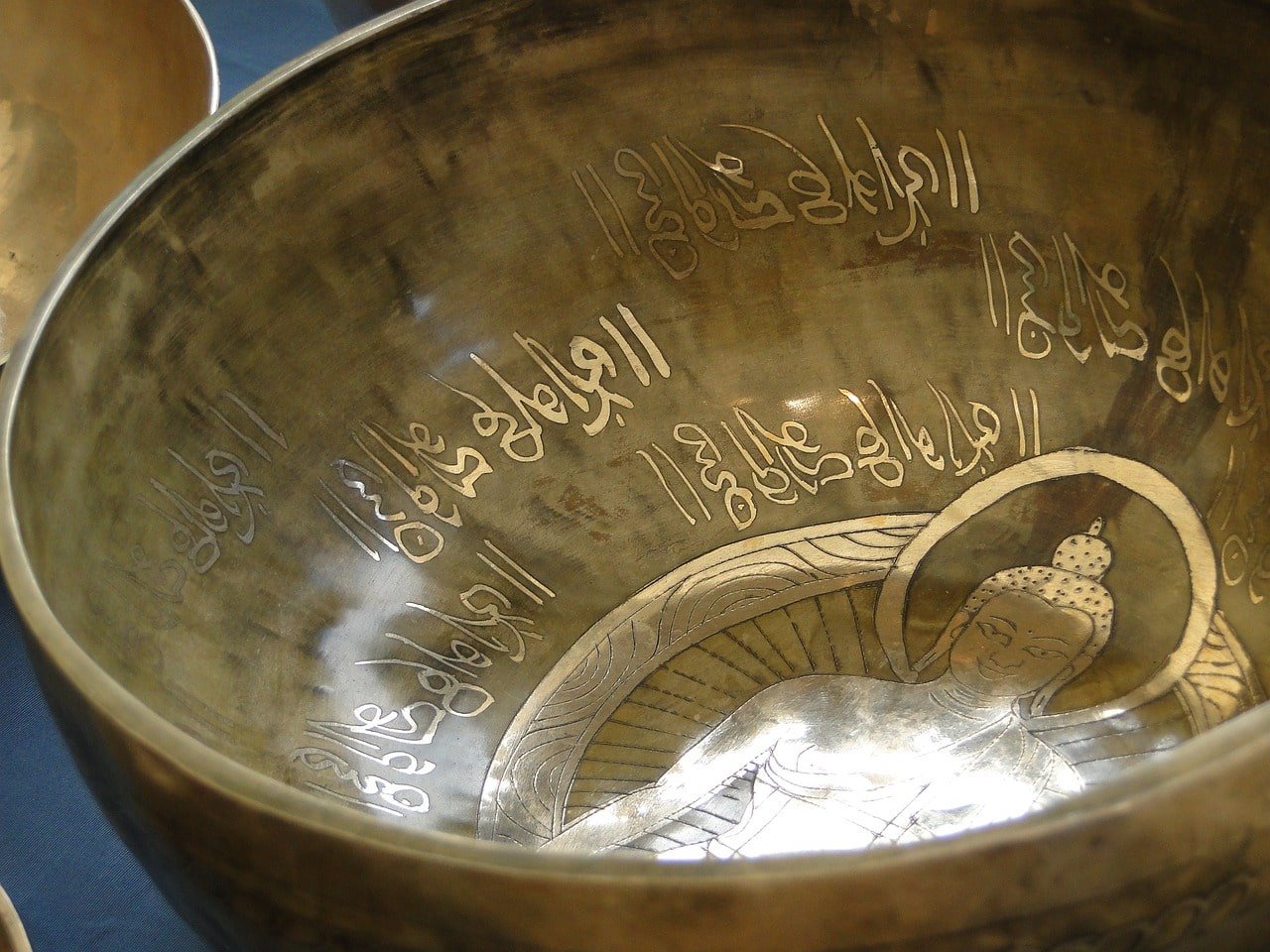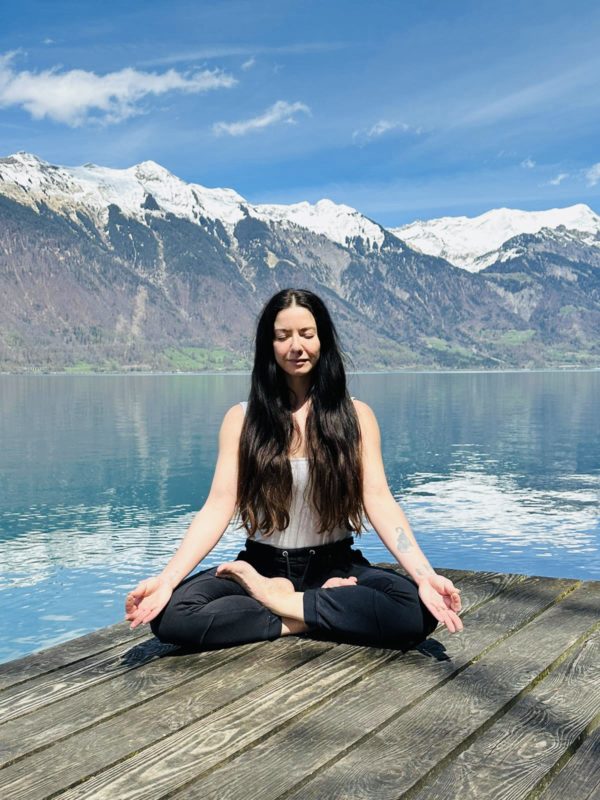What are mala beads and what have they got to do with poop?
In this comprehensive guide on mala beads, I will explain what they are, how to use them, why they’re beneficial, and what they have to do with poop! Learn how to choose, use, and integrate mala beads into your meditation practice for enhanced focus, peace, and spiritual connection. Watch my video to see how to use mala beads for meditation, what you definitely shouldn’t do, where I get my mala beads, and learn about my personal experience with them.
The Essence of Mala Beads
So what are mala beads and how to use mala beads effectively? Mala beads, mantra beads, or meditation beads, are much more than just a string of beads or a necklace. They are a tactile tool for meditation, deeply rooted in the Hindu and Buddhist traditions. However, their use transcends religious boundaries, welcoming anyone to incorporate them into their practice.
Comprising 108 beads with an additional guru or meru bead, mala beads serve as a guide for Japa Meditation—repeating a mantra 108 times. This repetition helps keep us anchored in the moment, focusing our minds and hearts on a mantra, affirmation, or even the rhythm of our breath.
The tactile nature of mala mantra beads is what sets them apart as a meditation tool. They offer a physical anchor for our practice, grounding us in the physical world while we explore the depths of our minds and spirits.
This grounding effect is particularly beneficial for those who find their thoughts wandering during meditation. The physical act of moving from bead to bead serves as a gentle reminder to return to our chosen point of focus, whether it be a mantra, an affirmation, or our breath. In essence, mala beads act as a bridge, connecting the tangible to the intangible, the physical to the spiritual.
A Bridge to Stillness and Silence
In a world filled with noise and distractions, finding moments of stillness and silence is rare and precious. Mala beads offer a unique solution to this challenge, especially for beginners or those with anxiety or ADHD.
The act of moving through each bead with a mantra or breath acts as a gentle “distraction from the distractions,” allowing us to return to our meditation anchor whenever our minds wander. This tactile engagement is particularly effective for those who struggle with sitting in silence or achieving stillness through traditional meditation methods. Through this engagement, individuals can learn how to use mala beads as a tool for anchoring their focus and calming their minds.
The beauty of using mala beads lies in their ability to transform meditation from a static practice into a dynamic one. Instead of striving to achieve a state of complete stillness and silence, which can be daunting for many, mala beads encourage a more active form of meditation.
This active engagement helps to quiet the mind more effectively for some, as it provides a simple, repetitive task that can soothe and focus the mind.
Moreover, the use of mala beads can make meditation more accessible to those who might otherwise find it difficult to engage in traditional practices, offering a bridge to deeper states of stillness and silence as their practice develops.
The Traditional Use and Symbolism
- Holding Your Mala: Traditionally, meditation beads are held in the right hand, with each bead rolled towards oneself using the thumb and middle finger—a practice rooted in cultural and spiritual respect. This traditional approach emphasizes the significance of understanding what are mala beads and the respectful manner in which they are utilized.
- The Guru or Meru Bead: The guru/meru bead, situated above the tassel, symbolizes your spiritual guide, teacher, or the universal energy, marking the completion of one round of Japa Meditation. It’s crucial to comprehend what are mala beads and the symbolism attached to each component, including the guru bead.
- Direction of Use: Upon reaching the guru bead, rather than crossing it (considered bad luck), one flips the mala to continue meditation in the opposite direction. This aspect highlights the importance of knowing what are mala beads, how to use mala beads, the proper protocol for using them in meditation practices, and the proper protocol for using them in meditation practices.
The traditional use of the right hand for holding mala beads stems from cultural beliefs and practices that view the left hand as less clean due to its association with performing dirty tasks. Traditionally in India, the left hand would be used to wipe the bum after going to the toilet or touching anything dirty. Still today it is considered bad manners to touch someone or pass them something with your left hand in India. This distinction between the left and right hand, emphasizes the importance of purity and respect in the practice of meditation.
However, it’s essential to remember what are mala beads and that the ultimate goal of using mala beads is to aid in meditation, and flexibility can be allowed to accommodate personal comfort and needs. Seeing as it’s unlikely that we’re using our left hand for such unclean tasks, it’s fine to use your left hand for meditating with your mala beads if you find it more comfortable.
The guru bead serves as a significant marker in one’s meditation journey, symbolizing not only the completion of a cycle but also the presence of guidance and protection on the spiritual path.
Choosing and Using Your Mala Beads
When selecting mala beads, let intuition guide you. The beads might call out to you through their color, material, or the energy or characteristic they embody.
Ensuring they have the correct number of beads and are authentic is crucial. Once chosen, using them becomes a personal and introspective journey. Whether you’re sitting on the floor or in a chair, let your hand rest comfortably, and begin your meditation by focusing on what are mala beads and each bead with intention and devotion.
The process of selecting mala beads is deeply personal and reflective of one’s journey and intentions in meditation. Understanding how to use mala beads for meditation effectively can enhance the meditative experience, allowing individuals to fully engage with their practice and deepen their connection to each bead. The connection one feels to their mala beads can enhance the meditative experience, making it more meaningful and profound.
It’s essential to approach the selection process with openness and mindfulness, allowing the beads that resonate with your current needs and aspirations to draw you in. This connection can serve as a source of strength and inspiration in your practice.
Mantras and Mala Beads: A Harmonious Pair
Sanskrit mantras are traditionally paired with mala beads, though affirmations or focused breathing can also serve as meaningful alternatives to meditation beads.
The choice of mantra is deeply personal; it can be as simple as “Om” or as complex as the “Gayatri Mantra.” For beginners, accompanying your practice with a recorded mantra can offer a multi-sensory experience, enriching your meditation with the vibrational quality of sacred sounds.
The harmonious relationship between mantras and mala beads enhances the meditative experience, creating a rhythm that can lead to deeper states of concentration and awareness. The repetition of a mantra, supported by the tactile sensation of the beads, helps to focus the mind and silence external distractions.
This combination can be particularly powerful for those seeking to deepen their meditation practice, offering a pathway to greater clarity, peace, and mindfulness.
(If you’re interested in learning about my 7 favourite mantras for meditation click here to read about them or watch my YouTube video)
Conclusion: How Mala Beads Can Transform Your Meditation Practice
Mala beads are a profound tool for meditation, offering a tangible means to deepen our practice and connect with the present moment. Understanding what are mala beads and their transformative potential can significantly enhance one’s meditation journey. Exploring how to use mala beads and their significance allows individuals to fully appreciate their role in facilitating meditation and mindfulness practices.
Their versatility and accessibility make them a great choice for anyone looking to explore meditation, irrespective of their background or beliefs.
As we thread our way through each bead, we’re reminded of the journey within—a path toward peace, mindfulness, and a deeper understanding of ourselves. Exploring what are mala beads and their significance, allows individuals to fully appreciate their role in facilitating meditation and mindfulness practices.
I encourage you to explore the use of mala beads in your practice and allow them to guide you to moments of stillness in a bustling world. I hope your journey with mala beads is filled with peace and joy, as you explore your connection with your inner self, understanding how to use mala beads effectively as a tool for focus and spiritual growth.
If you’re a 200 hr yoga teacher you will be interested in our Yoga Alliance YCEP 30 hrs Foundations of Teaching Meditation and Mindfulness Course to learn how to bring the benefits and practice of meditation to yourself and to your clients. Broaden your skills as a certified yoga and meditation teacher, reaching a wider audience, and gaining more professional opportunities.






